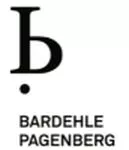- within Intellectual Property topic(s)
- in Australia
For more insights on the infringment of second medical use claims, read our IP Report on the decision of the LD Düsseldorf:
https://www.bardehle.com/en/ip-news-k...
Don't miss any new important decisions of the UPC: https://upc.law
The Düsseldorf Local Division has recently issued a decision of considerable importance in the pharmaceutical field: the first decision in the UPC system dealing with second medical use claims. For the first time, the Court has outlined requirements and essential factors for assessing infringement of a second medical use claim. This is all the more helpful given how scarce case law is in the member states.
In this groundbreaking decision issued on May 13, 2025, the Local Division Düsseldorf held that for finding infringement of second medical use claims, the claimant must show two aspects: First, the product is offered or placed on the market in such a way that it is used – or may be used – according to the patent.
Second, the alleged infringer knows or should have known of such use.
In other words, the claimant must show and prove a) as an objective element, that there is either a prescription for use according to the patent or at least additional circumstances showing that such use may be expected to occur, and b) as a subjective element, that the infringer knows – or reasonably should have known – of such use.
According to the Local Division Düsseldorf, these requirements cannot be defined in an abstract manner. Instead, the Court emphasizes that the question of whether a claimed use is at least to be expected has to be assessed on a case-by-case basis, taking into account all circumstances of the individual case.
So what factors may be considered when assessing actual — or at least expected — use under the patent, and the infringer's knowledge? Among others, the Court outlined four relevant factors:
First, the extent or significance of the allegedly infringing use;
Second, the relevant market and what is customary there;
Third, the market shares of the claimed use compared to other uses;
Fourth, what actions the alleged infringer has taken to influence the respective market, either positively de facto encouraging the patented use, or negatively by taking measures to prevent the product from being used for the patented use.
What can be derived from the decision is that the specific use must be the direct and independent treatment target. A mere windfall effect, where, during the treatment for the known first medical use, the claimed second medical use automatically and inevitably occurs and is appreciated, is not sufficient for finding infringement of the second medical use claim.
For more insights on this topic, see our IP Report on the decision of the LD Düsseldorf which is linked below. Also, we invite you to follow our channel for more insights on the UPC. We provide similar insights on a regular basis to help you navigate the new court system and its peculiarities.
The content of this article is intended to provide a general guide to the subject matter. Specialist advice should be sought about your specific circumstances.
[View Source]

